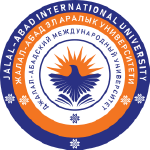Perception of the Learning Environment at Bangladesh's Government Medical College
DOI:
https://doi.org/10.63666/ejsmr.1694-9013.2.I.2025.43Keywords:
Perception, Environment, Learning, Social ScienceAbstract
Objective: The aim of the present study was to assess the Perception of the Learning Environment at Bangladesh's Government Medical College.
Methodology: This cross-sectional descriptive type of observational study was carried out among 166 participants within the defined period from January 2023 to December 2023. The study was carried out among faculties of phase IV of three government Medical Colleges of Mymensingh division. The sampling method of this study was purposive type non-probability sampling. All the data were compiled and sorted properly and the quantitative data was analyzed statistically by using Statistical Package for Social Science named SPSS 25.0 Result: 20% respondents told that educational environment for teaching were completely supportive. 1.8% respondents mention that classroom facilities (39.2%), more manpower (8.8%) and technology support (21.6%) needed to be resolved for better teaching/learning environment. Approximately 34.3% of the participants have actively conducted research. A quarter of the respondents (25.9%) had publications to their credit. The majority of respondents perceived their research environment as either completely (19.4%) or almost (25.5%) supportive. For those who perceived a lack of support, various factors are identified, including less logistic support, insufficient manpower and resources, time constraints, lack of funds, and accommodation issues.
Conclusion: From the findings of present study it is evident that medical institutes of Bangladesh should play a bit more active role for improving learning development.
References
1. Cross, V., Hicks, C., Parle, J. & Field, S., 2006. Perceptions of the learning environment in higher specialist training of doctors: implications for recruitment and retention. Medical education, 40(2), 121–128.
2. Genn, J.M. & Harden, R.M., 1986. What is medical education here really like? Suggestions for action research studies of climates of medical education environments. Medical teacher, 8(2), 111–124.
3. Ferdoush, J. & Tasmin Jeenia, F., 2021. Information and Communication Technology (ICT) in Medical Education: A Survey among Medical Students’ of Bangladesh. Industry and Higher Education, 3(1), 1689–1699.
4. Al-Hazimi, A., Al-Hyiani, A. & Roff, S., 2004. Perceptions of the educational environment of the medical school in King Abdul Aziz University, Saudi Arabia. Medical teacher, 26(6), 570–573.
5. Roff S, McAleer S, Skinner A. Development and validation of an instrument to measure the postgraduate clinical learning and teaching educational environment for hospital-based junior doctors in the UK. Med Teach. 2005;27(4):326–31. doi: 10.1080/01421590500150874.
6. Aghamolaei, T. & Fazel, I., 2010. Medical students’ perceptions of the educational environment at an Iranian Medical Sciences University. BMC medical education, 10(1), 1–7.
7. Liu, J. & Mao, Y., 2020. Continuing medical education and work commitment among rural healthcare workers: A cross-sectional study in 11 western provinces in China. BMJ Open, 10(8),1-13.
8. Aziz, K., Arif, A., Shahid, G., Afridi, A. and Fahim, M.F. (2018). Perception And Barriers Of Research Conduction Among Faculty Members Of BUMDC. Journal of Bahria University Medical and Dental College, 09(01), pp.25–29. doi:https://doi.org/10.51985/jbumdc2018093.
9. Rahman, S., Noman, F., Sultana, A., & Khatoon, S. (2018). Barriers of faculty development in under graduate medical education of Bangladesh. Bangladesh Journal of Medical Education, 9(1), 10–13. https://doi.org/10.3329/bjme.v9i1.36232
Downloads
Published
Issue
Section
License
Copyright (c) 2025 Eurasian Journal of Scientific and Multidisciplinary Research

This work is licensed under a Creative Commons Attribution-NonCommercial-NoDerivatives 4.0 International License.












